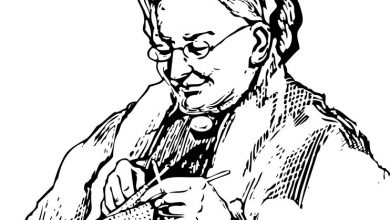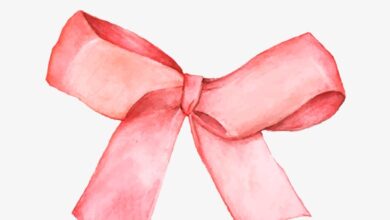“Friday Black” is a collection of short stories written by Nana Kwame Adjei-Brenyah, and published in 2018. The stories in “Friday Black” are known for their raw and powerful storytelling, tackling contemporary issues with a blend of satire and dark humor. While the stories vary in setting and characters, they are all connected by a common thread of social commentary and exploration of the complexities of the modern world, some notable selections being “The Finkelstein 5,” “Zimmer Land,” and “Light Splitter”
In the titular story, the author presents a stark and unsettling portrayal of consumerism and its dehumanizing effects on both shoppers and employees. The chaotic scenes of desperate shoppers acting like “rabid and incoherent animals” paint a grim and dark picture of the consequences of excessive materialism.
Friday Black | Summary
The scene is set at the Prominent Mall, where the narrator is a seasoned employee tasked with managing a chaotic crowd on his fourth Black Friday there. Richard, another employee, is anxious about meeting sales targets, and there is a contest for the employee with the highest sales to win a coat. The narrator plans to win the most expensive coat, the SuperShell, and gift it to his mother.
Most customers are after the popular PoleFace™ products, and the narrator’s name is consistently listed for that section in the daily breakdown. The new employee, Duo, is learning from the narrator but lacks the same skills for dealing with the frenzy. Michel and Lance, other employees, handle different sections.
As the gates open, a rush of eager customers floods the store, pushing and clawing their way in. The narrator warns the district manager, Richard, to find safety behind the registers. Amidst the frenzy, the narrator notices a young girl getting lost in the crowd. Lance, the employee in charge of shoes and graphic tees, attempts to move her to a designated area for bodies, assuming she’s injured. However, the girl’s mother intervenes, showing that she is still alive. The mother struggles to lead her injured daughter away while the narrator has no choice but to focus on the scene unfolding around them.
The narrator, however, unlike the others, remains composed and capable of understanding the customers’ needs, and ensures that their demands are met.
As the crowd becomes more aggressive, the narrator continues tossing items to appease the customers’ demands. He witnesses a woman violently harm a child to secure a fleece jacket, he helps others who still speak coherently.
The management downplays the severity of the situation, claiming that the mall is still focused on customer care and interpersonal cohesion, despite the chaotic scenes.
The narrator, as already established, excels at sales and has already made an impressive amount of money in the first five hours. He plans to buy a $500 jacket as a gift for his mother, imagining the joy on her face when she receives it. As the morning progresses, the pace slows down as some customers leave or rest, while others succumb to the madness.
During his break, the narrator encounters Duo, the new employee in the denim section. The store is a mess, with bloodstains and scattered jeans everywhere. Duo admits that he now understands the crazed behavior of customers during Black Friday, and the narrator tries to reassure him. However, Duo is still uncertain and overwhelmed by the experience.
After finishing his shift at the store, the narrator takes his break and heads to the food court. Outside the store, the aftermath of the shopping frenzy is evident, with people exhausted and collapsed all around. The narrator reflects on the lack of Thanksgiving celebrations in his own family due to strained relationships and financial difficulties. He remembers a previous Black Friday when he competed with a coworker named Wendy for the highest sales. Despite Wendy’s attempt to sabotage him with a tainted pie, he had emerged victorious and been the sales lead ever since.
When he finally reaches the food court, where the smell of food mingles with the grim scene of the deceased customers. He orders some burgers and sits at an empty table, contemplating the toll of Black Friday while surrounded by the aftermath of consumerism-driven madness. While there, he encounters the woman he helped at the store, who now has a television box as her prized purchase. She seems to have lost her sanity and reveals that some were trampled to death at the store but that she, being stronger than them, survived.
As the narrator receives a call from the store, he learns that Duo has quit, unable to cope with the distressing scenes. He tries to console Duo, but he insists that the expensive coat he planned to buy for his mother is not necessary to prove his love.
Reflecting on past Black Fridays, the narrator remembers his success in outselling everyone even without the incentives and prizes offered by the company.
Returning to the store, he witnesses a dangerous situation in PoleFace™ where a young woman is attempting to harm Angela, who is pinned against the wall by the sought-after SuperShells. The situation is tense, and he knows that the girl desires the SuperShell parka. He intervenes and grabs the parka, luring the woman outside where she eventually takes the coat and thanks him. Back at the register, Richard rings her up, and Angela expresses her gratitude to the narrator.
Returning to his section, he witnesses a crowd of shoppers approaching the store. They are eager to buy the remaining PoleFace™ products, and he climbs on top of his cabin to handle the rush. The customers are wild, driven by the frenzy of Black Friday. With a smile on his face, the narrator prepares to assist them in their frantic search for deals.
Friday Black | Analysis
The story “Friday Black” portrays a Black Friday shopping frenzy through the eyes of a seasoned retail employee. The chaotic scene reveals desperate shoppers acting like rabid animals, causing casualties amid their pursuit of consumer happiness. The employee witnesses the disturbing and heartless nature of the event as corpses are treated with indifference in the midst of the madness.
The desperate frenzied behavior of customers reduces them to mindless and aggressive beings, or “Friday heads.” The shoppers’ animalistic actions reveal the dangerous consequences of excessive consumerism, turning them into a mob that tramples over others to acquire material possessions.
“Friday Black” highlights the emotional toll on the employees who are compelled to endure the mayhem. The narrator’s personal struggles and his desire to buy an expensive jacket for his mother serve as a poignant contrast to the materialistic chaos surrounding him. This only highlights that consumerism and capitalism touch every portion of society. Clearly, in the story, it is never the economically well-off section of society that appears at the doors of Prominent Mall. It is the section of society that has “eyes, deep red around his lids, redder at the corners,” in other words, people who cannot afford to buy products at the higher price, that is, the section that is already left out seeming almost inhuman and zombie-like by capitalism in modern society.
This greed is further inflamed by the creation of an artificial need on the part of the companies: the Black Friday sale. Products are offered at a lower price, giving them artificial value. People are driven to madness by their need to purchase by their personal grievances in their respective lives. The man with wild eyes who desperately pleads for a SleekPack jacket desires it because it is the only thing his son wants for Christmas. Being able to gift his son the desired consumable makes him feel like a better father, as the narrator acutely observes. The man seeking the Coalmeister bubble coat does so because, without it, he feels alienated at his workplace: all other employees have one. These individuals cannot be pinned down only as people driven blindly by consumerism, but rather as victims of capitalism and the fanciful solutions it advertises to the alienated modern man. Even mall employees are not exempt from their consumerist tendencies. They too desire the expensive SuperShell and compete among themselves to make the maximum sales in order to get it. The only character that does not show signs of the frenzy is perhaps Duo, the new employee, who quits the job saying that the expensive coat “isn’t proof.” It is this message that the story tries to get through to its readers.
The story raises questions about the cost of participating in the consumerist culture and how it affects individual relationships and personal values. When the gates to the mall are raised and the crowd rushes in, the first sight that the narrator sees is that of a girl of about six being trampled in the crazed rush. Her mother, however, registers this incident without interest, and simply yanks the girl to her feet, continuing on her way, unaware or unconcerned about the bruises on the girl’s face. Even the girl herself does not cry, further reinforcing how children too become part of this incessant consumerist hunger.
The story also comments on the indifference of corporations and management toward the well-being of employees and customers. The mall management’s callous memo dismisses the casualties on Black Friday as a mere “special case,” revealing the insensitivity and lack of empathy on the part of the corporate world.
Friday Black | Themes
“Friday Black” critiques the extreme behavior of shoppers on Black Friday, who become consumed by their pursuit of discounted items and are willing to resort to violence and inhumane actions to satisfy their materialistic cravings. The SuperShell parka serves as a symbol of excessive consumerism and obsession with possessions. The dehumanizing effects of consumerism are highlighted through the portrayal of shoppers as ”Friday heads” and the way they become like animals, losing their sense of empathy and connection with others. The narrative explores how the shopping frenzy alienates people from their humanity, turning them into mindless and aggressive beings.
“Friday Black” critiques corporate indifference and the lack of concern for the well-being of employees and customers. The mall-wide memo that downplays the casualties on Black Friday as a mere “special case,” and that it remains “still a hub of customer care and interpersonal cohesiveness,” satirizes the apathy and disregard for human life shown by those in positions of power.
The story explores the emotional toll of consumerism and the disconnection between material possessions and genuine emotional connections. The narrator’s pursuit of buying an expensive jacket for his mother is rooted in his belief that it will garner her love and affection, but the materialistic chaos around him highlights the emptiness of such desires.
“Friday Black” also critiques the exploitative nature of capitalism and the ways in which consumer culture and corporate interests can manipulate and exploit individuals for profit. The buyers are red-eyed and look like zombies. Children get trampled in the story, and their parents are too busy to notice. Out in the food court, the narrator describes :“the smell of food wafts over the stench of the freshly deceased like a muzzle on a rabid dog.” However, he remains unconcerned: death and carnage remain unaddressed and unsurprising results of the consumerist frenzy. The woman who had initially appeared with the grey scarf and the child carry only a television set and wear her new coat. Her ear is bloodied, and mangled by teeth, and the child is nowhere to be seen, but she does not seem to notice either of these things.
Friday Black | Title of the Story
The most obvious and direct significance of the title refers to the term “Black Friday,” which is the day after Thanksgiving in the United States when retailers offer significant discounts and promotions to kick-start the holiday shopping season. The story is set on Black Friday, and much of the narrative revolves around the chaotic and frenzied shopping rush that characterizes this day. The title becomes a satire of itself, though dark and grim, critiquing the capitalist tendencies that shoppers fall prey to.
Friday Black | Literary Devices
In “Friday Black,” Nana Kwame Adjei-Brenyah satirizes the obsession with consumerism on Black Friday, portraying shoppers as mindless “Friday heads” who turn literally into incoherent animals in pursuit of material possessions. The absurdity of their behavior highlights the absurdity of the consumer culture and the extent to which people will go for a good deal. Through its use of dark humor and exaggerated scenarios, the story satirizes, with its use of hyperbole, the extreme behavior and values of people on Black Friday, a day symbolizing the height of the consumerist frenzy.
The irony in the story highlights the hypocrisy and contradictions in society’s values, by reflecting the stark contrast between the holiday season’s spirit of love and giving and the violent and materialistic nature of Black Friday in the story, where humans are not only dehumanized but also stripped bare to almost the most primitive species, characterized only by their greed and hunger to accumulate resources.




